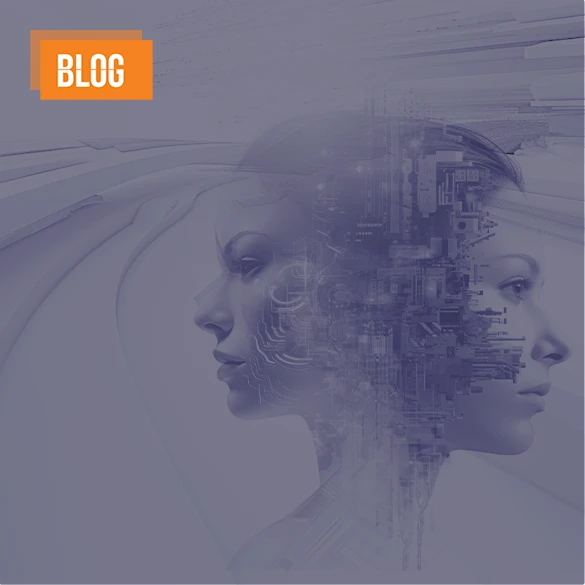Driving Superior Customer Experience with AI-Powered Strategies


The commoditization of voice and data services, falling average revenue per user (ARPU), dwindling profit margins and rising churn are pushing service providers to focus on customer experience with renewed interest. This emphasis is amplified further by digital users who are fast maturing and who continuously push the demand for best-in-class experiences across all customer communication channels and touchpoints.
Ensuring superior customer experience has become all the more crucial as service providers expand their portfolios to cover new, innovative services such as rich content offers, cloud gaming, mobile finance and smart home services. Well engaged subscribers are more likely to take up new offerings, augmenting service providers’ ability to cross-sell new products and services.
Service providers are also continuously expending more resources to develop their networks. This includes large financial outlays incurred in developing 5G infrastructure. To justify such investments, service providers need to put in place new approaches to boost subscriber acquisition. By ramping up customer experience and satisfaction levels, service providers are able rapidly boost their subscriber numbers, accelerate monetization and achieve the expected ROI.
Identifying customer experience pre-requisites
Customer experience has evolved from a simple concept defining how subscribers feel about a service to a strategic enabler driving various business outcomes for the service provider. From delivering information to the fingertips of subscribers to enabling a greater degree of self-service to facilitating transactions with partner brands and to eliciting useful feedback, customer experience today has taken a much more central role in the operations and sustainability of service provider business. To take on these new roles, however, customer experience has to be supported by a number of innovative, cutting-edge technologies and forward ideas, as discussed below.
Mining and using information for automation and intelligence
Foremost among these are tools that deliver powerful insights into customer behavior and preferences. Deep customer insights help service providers deliver contextual offerings that are aligned to their customers’ needs. However, for most service providers, this often proves to be a challenge due to the in-silo management of customer data. Such fragmentation results in the extensive collation and integration of structured and unstructured data from various touch points.
To address this, service providers need a robust and scalable data and analytics platform that is capable of automatically integrating information sources from multiple touchpoints in real-time. By analysing and correlating different inputs, service providers can better understand the customer’s journey and identify gaps in their service as well as customer care responses. Overlaying these analytics with advanced machine learning (ML) and deep learning (DL) algorithms, service providers are able to predict their subscriber's needs and deliver highly personalized engagement and offers.
Improving customer takeaway with conversational intelligence and superior CX
More than ever, service providers are under pressure to deliver a greater experience to their subscribers across all channels. Nearly one in three customers say that they will leave a brand after just one bad experience, according to Price Waterhouse Coopers (PWC)’s report. At the same time, customers are ready to pay a premium of up to 16% to a company that provides a great experience, as per the same report.
The ability to merge conversations and interactions from different channels onto a single dashboard is proving to be a critical prerequisite for delivering a better customer experience. The proliferation of digital channels requires tracking of all conversations and interactions, regardless of the touchpoints, so that there is consistency in how subscriber queries and issues are approached.
At the same time, the rise of digital-savvy users has unleashed new forms of interactions that service providers can take advantage of. Chatbots and virtual assistants for example, can greatly automate routine interactions between the service provider and subscribers, reducing the workloads of customer care representatives. These are supplemented with comprehensive service management solutions that manage customer issues from end-to-end – from the assignment of tickets to issue tracking as well as quick reference libraries that help customer service representatives to respond and resolve issues in time.
Building next generation operational and delivery models
5G’s use cases, namely eMBB, URLLC, mMTC and FWA are opening up a world of opportunities for mobile operators. Leveraging dynamic instantiation of virtual networks via network slicing technologies, mobile operators are able to support highly complex and demanding connectivity needs for a wide range of enterprise customers. To enable this however, operators require a centralized platform that enables them to provision and manage different network services, slices and equipment. The platform also facilitates B2X and B2B2X revenue models by including partner products and solutions such as devices, IT services and applications, to serve the needs of specific industry verticals such as healthcare and energy.
Redefining market leadership
Over the last few years, Etiya has established itself as an industry-leading provider of Business Support Systems (BSS) and customer experience solutions. It has specially carved a niche in AI-powered products and solutions to support service providers in maximizing the value of data assets and taking better-informed decisions to reach their business goals.
Etiya’s suite of products and solutions includes a comprehensive, real-time data monitoring solution that merges data from various repositories - big data worksheets, servers and cloud services. This is complemented by its AI platform, Cognitus, which uses advanced AI techniques such as ML and natural language programming to deliver predictions and recommendations that are highly contextual. At the same time, Etiya’s Digital Interaction Management (DIM) platform leverages AI-based social listening and proactive channel management to consolidate interactions from different digital channels while its Chatbot product merges conversational intelligence and personalization to enable real-time messaging for these channels. Etiya also offers a powerful Customer Service Management product covering ticket management, workflow and interaction management and knowledge management. Etiya’s Network Commerce and Management Platform (NetCoM), a cloud-based solution, drives 5G network monetization by centralizing the management of network services, slices and equipment. It also drives B2X and B2B2X revenue models with APIs and external catalogue onboarding. Etiya’s next-generation Campaign Management provides the intelligence and multi-channel support to deliver real-time, AI-based personalized offers while tracking and reporting on each campaign performance for continuous optimization.
Garnering success by delivering what subscribers really want
Continuous innovations in the customer experience and BSS space enable service providers to enhance and optimize their service offerings in accordance to changing subscriber needs. By utilizing the latest in AI techniques such as ML, vendors in the customer experience and BSS space are rapidly enhancing these offerings with actionable insights that can be integrated across all facets of telco operations to drive automation, efficiency, performance and profitability in a highly competitive marketplace.
This article was first published on The Fast Mode








